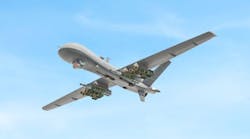Officials of the Army Contracting Command in Warren, Mich., announced contracts to two combat vehicle manufacturers Friday to develop design vehicle and vetronics concepts for the Future Fighting Vehicle (FFV) -- yet a notional concept that aims at developing enabling technologies that potentially could become part of future ground systems.
The FFV concept-design contacts are going to General Dynamics Land Systems in Sterling Heights, Mich. -- designer of the Army's M1 Abrams main battle tank -- and BAE Systems Land and Armaments in Sterling Heights, Mich. -- maker of the Army's M2 Bradley Fighting Vehicle and M109A6 Paladin self-propelled howitzer.
The Army on Friday awarded a $28.3 million contract to General Dynamics and a $28.9 million contract to BAE Systems. The companies will complete their 18-month contracts to define FFV concepts in November 2016.
Army officials admittedly are taking it slow with the FFV project -- not yet officially a program of record -- to avoid some of the pitfalls that spelled the end of the Army's Ground Combat Vehicle (GCV) program early last year, and the Future Combat Systems (FCS) program in 2009.
General Dynamics and BAE Systems won small contracts last summer to capitalize on vetronics and similar technologies they developed for the cancelled GCV program for potential use on a Future Fighting Vehicle.
Tight budgets, rapidly changing requirements, and reliability concerns have led to armored vehicle program cancellations going back 30 years to the Army M247 Sergeant York Division Air Defense (DIVAD) self-propelled anti-aircraft gun, which was cancelled in 1985 amid rising costs and reliability concerns.
One bright spot on the combat vehicle front is the Joint Light Tactical Vehicle (JLTV) program to replace U.S. military Humvees. The JLTV program is in a 33-month engineering and manufacturing development phase. The three competitors -- AM General, Lockheed Martin, and Oshkosh -- are vying for the low-rate initial production contract, which the U.S. Army Tank-automotive and Armaments Command (TACOM) expects to award to one contractor sometime this year.
The U.S. Department of Defense (DOD) wants to buy 54,599 JLTVs -- 49,099 for the U.S. Army and 5,500 for the U.S. Marine Corps. The U.S. Government Accountability Office (GAO) estimates that the DOD will spend more than $53.3 billion on the JLTV program -- $1.1 billion for research and at least $52.3 billion for procurement.
Meanwhile, many of today's U.S. armored combat vehicles are noticeably aging -- although periodic technology upgrades have kept them in front-line fighting condition. The Stryker family of eight-wheeled combat vehicles, for example, as been in service since 2002.
The M1 tank has been in the inventory since 1980. The Bradley Fighting Vehicle -- the system that GCV was intended to replace -- has been in service since 1981. The Army's M109A6 Paladin self-propelled howitzer has been in the inventory since the late 1990s.
Here's hoping the Army's Future Fighting Vehicle program can hit the target where so many others have missed, and will yield capable, affordable combat vehicle technologies for the 21st century.



